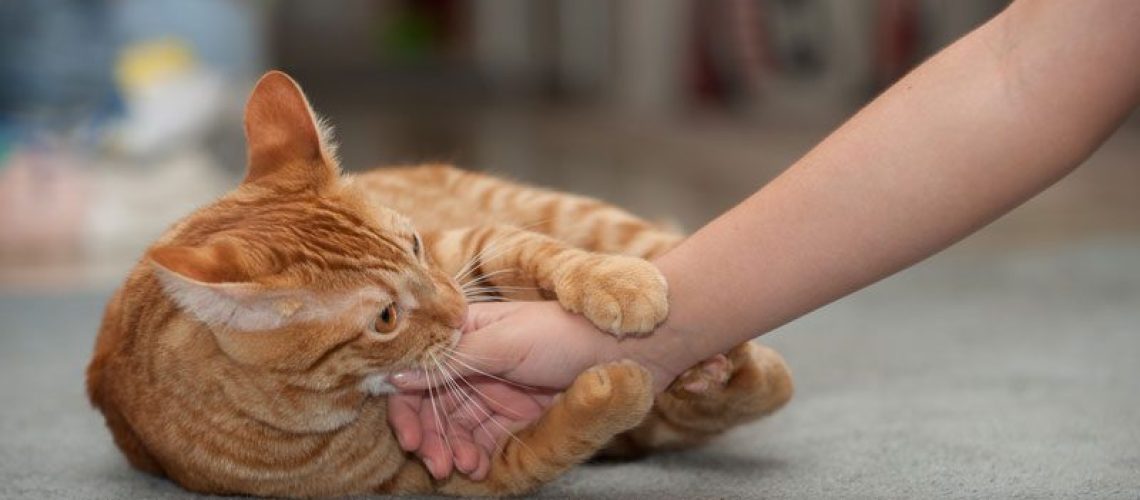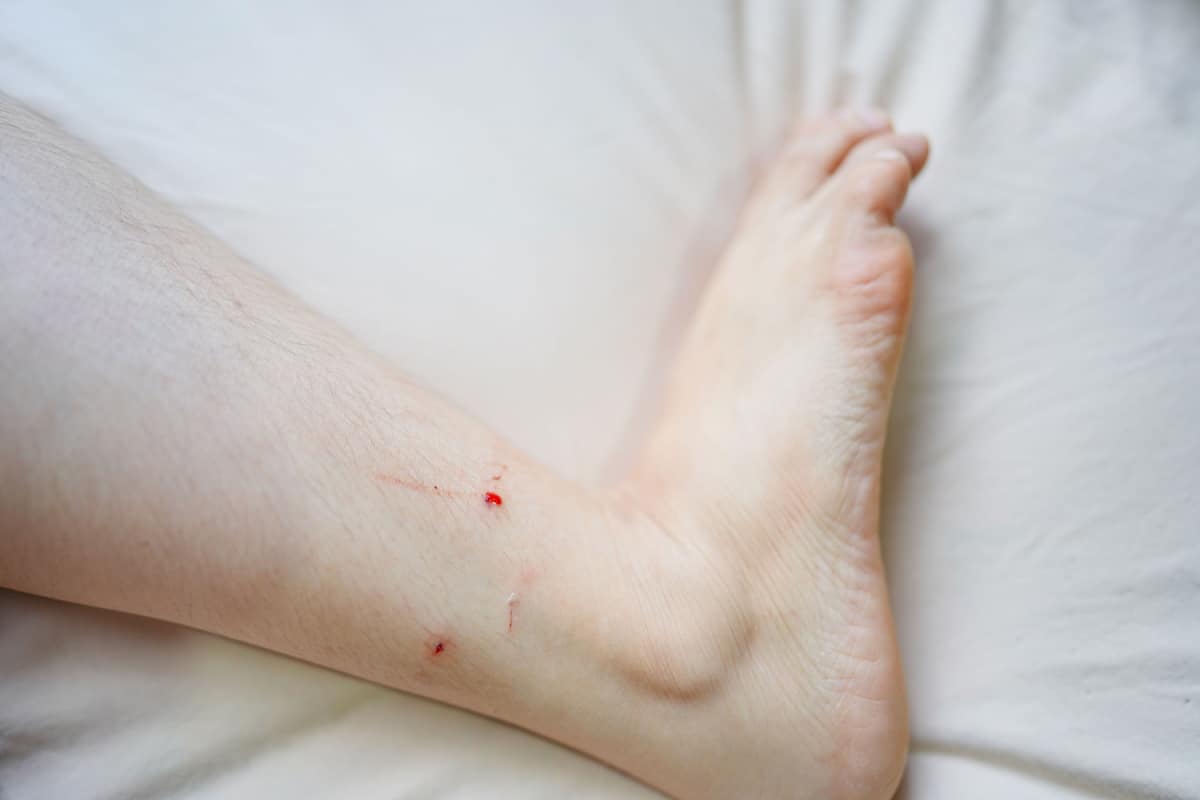Are you tired of dealing with painful cat bites and scratches? Do you want to learn how to interact with your furry friend without getting hurt? Well, you're in luck! In this article, we will explore the world of gentle touch and how it can prevent those pesky cat bites and scratches. Understanding this topic is essential for any cat owner who wants to create a safe and harmonious environment for both themselves and their feline companions. By delving into the art of gentle touch, you'll not only reduce the risk of injuries but also strengthen the bond between you and your beloved pet. So, let's dive in and discover the secrets to a scratch-free life with your furry friend!
Key Takeaways:
- Always approach cats gently and slowly to avoid triggering defensive behavior.
- Avoid rough play with cats, as it can lead to bites and scratches.
- Provide appropriate toys for cats to redirect their energy and prevent them from biting or scratching humans.
- Learn to read a cat's body language to understand when they may be feeling threatened or agitated.
- If a cat does bite or scratch, clean the wound promptly and seek medical attention if necessary to prevent infection.
Why is it important to prevent cat bites and scratches?
Preventing cat bites and scratches is important for both the well-being of the cat and the safety of humans. Cat bites and scratches can cause serious infections, such as cat-scratch disease, which can lead to fever, fatigue, and swollen lymph nodes. In some cases, these infections can even be life-threatening.
Furthermore, cat bites and scratches can also lead to physical injuries like cuts and puncture wounds. These injuries can be painful and may require medical attention, including stitches or antibiotics.
The risks of cat bites:
- Infections: Cat saliva contains bacteria that can cause infections when introduced into a human's bloodstream through a bite.
- Cat-scratch disease: This bacterial infection is transmitted through scratches or bites from infected cats.
- Allergic reactions: Some people may develop allergic reactions to cat bites or scratches, leading to redness, swelling, itching, or hives.
The risks of cat scratches:
- Bacterial infections: If a scratch breaks the skin, it can introduce bacteria into the body and potentially cause an infection.
- Tetanus: Deep scratches that are contaminated with dirt or other foreign substances may increase the risk of tetanus infection.
- Scarring: Deep or severe scratches can leave permanent scars on the skin.
By taking steps to prevent cat bites and scratches, you can ensure a safe and healthy environment for both you and your feline companion.
Gentle ways to approach and interact with a cat
Cats have their unique personalities and preferences when it comes to interaction. Approaching a cat in a gentle and respectful manner can help build trust and create positive experiences for both you and the cat.
Here are some tips for approaching and interacting with a cat:
1. Give the cat space:
Allow the cat to approach you on its terms. Avoid forcing interaction or invading their personal space. Cats appreciate having control over their environment, so let them come to you when they feel comfortable.
2. Use slow movements:
Sudden or fast movements can startle cats and make them feel threatened. Instead, use slow and deliberate movements when reaching out to pet or play with a cat.
3. Offer your hand for sniffing:
Before attempting to pet a cat, extend your hand towards them, allowing them to sniff and investigate at their own pace. This helps the cat become familiar with your scent and presence.
4. Avoid direct eye contact:
Cats may perceive direct eye contact as a sign of aggression or dominance. Instead, blink slowly at the cat, which is considered a friendly gesture in feline language.
5. Respect body language:
Pay attention to the cat's body language to gauge their comfort level. If a cat starts showing signs of agitation or fear (such as hissing, growling, flattening ears, or swishing tail), give them space and avoid further interaction.
Remember that each cat is unique, and it's important to approach them with patience and respect for their boundaries.
How can you tell if a cat is feeling scared or agitated?
Recognizing body language cues
When a cat is feeling scared or agitated, their body language can provide important clues. Look for signs such as flattened ears, dilated pupils, a twitching tail, and a hunched posture. These are all indications that the cat may be feeling threatened or anxious. Additionally, if the cat starts hissing, growling, or swatting at the air, it's a clear sign of agitation.
Changes in behavior
Another way to determine if a cat is scared or agitated is by observing changes in their behavior. For example, they may become more withdrawn and hide in unusual places. They might also refuse to eat or use their litter box properly. If you notice these sudden changes in your cat's behavior, it's essential to address their emotional state and provide them with a safe and calm environment.
Signs that a cat may be about to bite or scratch
Tail flicking
One of the most common signs that a cat is about to bite or scratch is tail flicking. When a cat rapidly moves its tail from side to side, it indicates that they are becoming increasingly agitated and may resort to aggressive behavior. It's crucial not to ignore this warning sign and give the cat space.
Ears pinned back
Another indication that a cat may be preparing to bite or scratch is when their ears are pinned back against their head. This defensive posture suggests that the cat feels threatened and is ready to defend itself. If you notice this behavior in your cat, it's best to avoid any sudden movements and give them time to calm down.
Responding to aggressive behavior from a cat
If a cat displays aggressive behavior, it's important to respond appropriately to ensure everyone's safety. Avoid punishing or yelling at the cat, as this can escalate the situation further. Instead, calmly remove yourself from the cat's presence and give them space to calm down. If necessary, consult with a veterinarian or animal behaviorist for guidance on how to address the underlying causes of aggression.
Preventing cat bites and scratches during playtime
Use appropriate toys
When engaging in playtime with your cat, it's essential to use toys that encourage safe interaction. Avoid using your hands or feet as play objects, as this can confuse the cat and lead to accidental bites or scratches. Opt for interactive toys such as feather wands or puzzle toys that keep your cat engaged without risking injury.
Recognize warning signs
During playtime, pay attention to any warning signs that indicate your cat may become overly excited or agitated. These signs may include increased vocalization, rapid tail movements, or dilated pupils. If you notice these cues, take a break from play and allow your cat to relax before resuming the activity.
The importance of seeking medical attention for cat bites and scratches
Risk of infection
Cat bites and scratches can easily lead to infections due to bacteria present in their mouths and claws. Even seemingly minor wounds should be taken seriously as they can quickly become infected if not properly treated. Seeking medical attention ensures that any potential infections are addressed promptly.
Tetanus prevention
In some cases, cat bites or deep scratches may require a tetanus shot if it has been more than five years since your last vaccination. Tetanus is a serious bacterial infection that affects the nervous system and can be life-threatening if left untreated. Consulting with a healthcare professional will help determine if a tetanus shot is necessary.
Remember, it's always better to be safe than sorry when it comes to cat bites and scratches. Seeking medical attention promptly can prevent complications and ensure both you and your furry friend stay healthy.
In conclusion, it is important to approach cats with a gentle touch to prevent bites and scratches. By understanding their body language and giving them space when they need it, we can build a safe and happy relationship with our feline friends.
How do I stop my cat from biting and scratching me?
To divert their attention, try using toys. You can provide strings, toy mice, or light-up lasers to distract them from scratching or biting. This will also enable you to interact with them from a safe distance, preventing any potential injuries to yourself.
How do I train my cat not to bite when petting?
If your cat bites you while playing, firmly tell them "no" and take a break from playing for a little while. By consistently ending playtime whenever your cat bites, they will learn to stop biting. It is important to never yell at or physically punish your cat for play biting.
Why does my cat gently bite and scratch me?
According to Purina, cats may also bite when they play with their owners, in addition to pouncing and grabbing. This behavior is completely normal and is a result of their natural hunting instincts. To discourage this behavior, you can reward them with affection or treats when they play gently and nicely.
Why does my cat bite and scratch me when I pet her?
The cat initially enjoys human contact but becomes annoyed when the petting becomes repetitive. It may bite as a way to express that it has reached its limit. This behavior can be compared to humans, where a pat on the back can feel good.
Is it bad to hit your cat if they bite you?
It is important to never physically harm or raise your voice at your cat if it bites. Doing so will only reinforce the idea that hands are associated with pain or that petting is not enjoyable, making your cat less tolerant of being handled. It may also cause your cat to become fearful of you.
How do you desensitize a cat to touch?
When the cat is calm, give it lots of praise. Take your time and slowly increase the amount of the cat's body that you touch. The ultimate goal is to teach your cat to enjoy being touched and handled so that it does not feel defensive, threatened, or irritated. Begin the lessons when your cat is in a relaxed state.

















